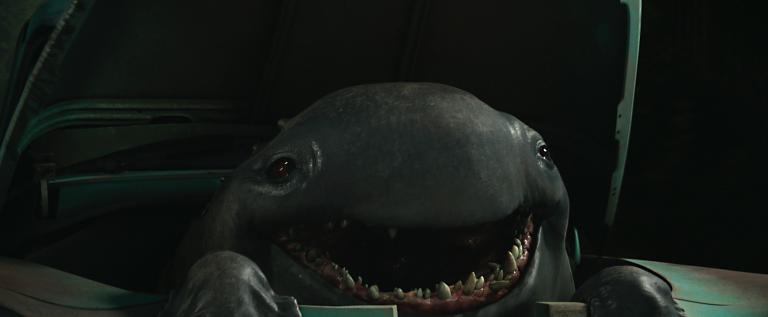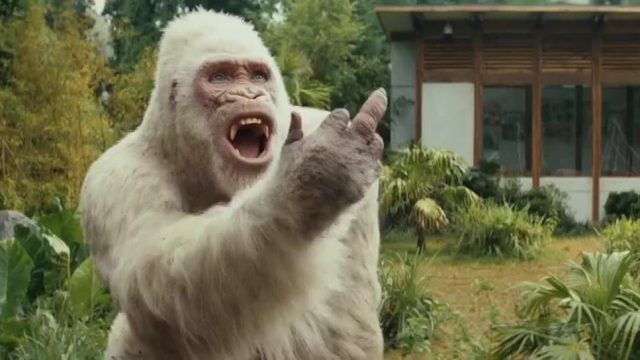The last decade has seen a major resurgence in the presence of high-budget monster movies at the domestic box office. Previously the terrain of foreign cinema and B-movie drive-in’s, today, the monster movie is a go-to source to deliver spectacle for audiences and drum up plenty of money for studio executives. In the last eleven years or so, everything ranging from Pacific Rim to The Meg to Rampage have managed to crack $400 million worldwide while Legendary Pictures has created one of the few non-Marvel cinematic universes that’s actually taken off with the MonsterVerse, a franchise that currently consists of Godzilla, Kong: Skull Island and this Friday’s Godzilla: King of the Monsters.
It’s kind of delightful to see Hollywood now turning to a movie whose basic premise is “Jason Statham vs. Gigantic Prehistoric Shark” as a source for blockbuster revenue, but as has already been established, that hasn’t always been the case. What exactly has driven this new frenzy of big-budget monster movies? Well, for one thing, modern visual effects allow for films like Pacific Rim to properly realize monster movie spectacle like you’ve never seen before, that certainly doesn’t hurt. However, another key thing driving the genre is a love for what’s being adapted, the people behind these new monster movies clearly have a fondness for the material they’re adapting and want to make new entries in a cinematic cannon near and dear to their heart.
For comparison’s sake, Roland Emmerich, director of that 1998 Godzilla motion picture, has been upfront that a big problem with his take on Godzilla was that he didn’t have much interest in the world of monster movies. Emmerich did have some fondness for alien invasion features, hence why his 1996 Independence Day directorial effort managed to work so well, but when it came time for him to put his stamp on Godzilla, he was understandably out of his depth. Meanwhile, Guillermo del Toro wears his love for massive monsters and robots on his sleeve and that comes through in every frame of the terrific Pacific Rim. The grandeur of the beasts in Pacific Rim is constantly felt whereas every shot of a monster in the 1998 Godzilla is utterly lifeless.
Such personal creative devotion is also apparent in Cloverfield, which may actually be the movie that helped kick off our modern fascination with upscale monster fare. This directorial debut of Matt Reeves that clearly has a fondness for classic monster movies and wishes to explore them (literally) from a different angle. When you’ve got a personal fondness for the material you’re adapting, well, that certainly helps set the modern American monster movie boon apart from the more mechanical brand exploitation that marked late 1990’s efforts like Emmerich’s Godzilla. But is that the only reason these movies have become so prominent in the modern era of cinema?
Well, the ascension of monster movies from B-movie fare to the kind of stuff that can warrant a $200 million budget in 2019 is also the fact that they handily allow American movie studios (frequently partnering up with Chinese-owned outfits like Legendary Pictures) to create the optimal product for any movie studio in 2019: big-budget spectacle-heavy fare that can easily be sold to moviegoers across the planet. Monsters crashing down buildings (sometimes accompanied by Dwayne Johnson, other times by Jason Statham) is something that can easily be understood in any language, especially if it’s accompanied by an iconic brand name like Godzilla or King Kong. Yesterday’s go-to drive-in movie theater fare is today one of the most expensive titles on the 2019 slate of Warner Bros., a studio that’s managed to wring a combined $1.5+ billion out of Godzilla, Kong: Skull Island and The Meg over the last five years.
That’s the sad cynical side to the whole proceedings (no ethical consumption under capitalism and all that) but the good news is that at least the new fascination with doing more professional produced trashy monster fare has resulted in some gems like Rampage and Cloverfield and is developing promising looking projects in the future, including this summer’s Crawl, which involves a lady having to fight off hordes of crocodiles in a hurricane. Plus, Hollywood’s new love affair with monster movies, though heavily geared towards pre-existing brands, has managed to also develop some newly created cinematic monsters, including one that’s already widely regarded as one of the best movie monsters in history…


